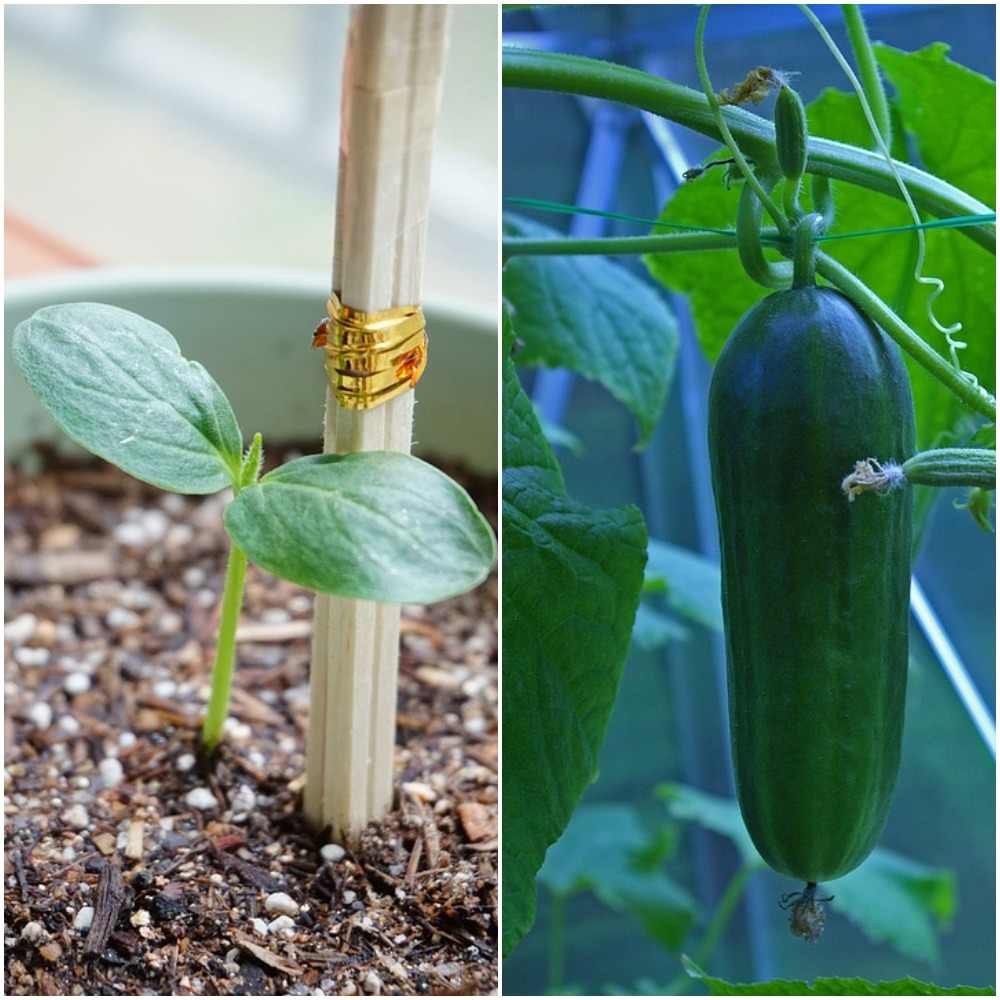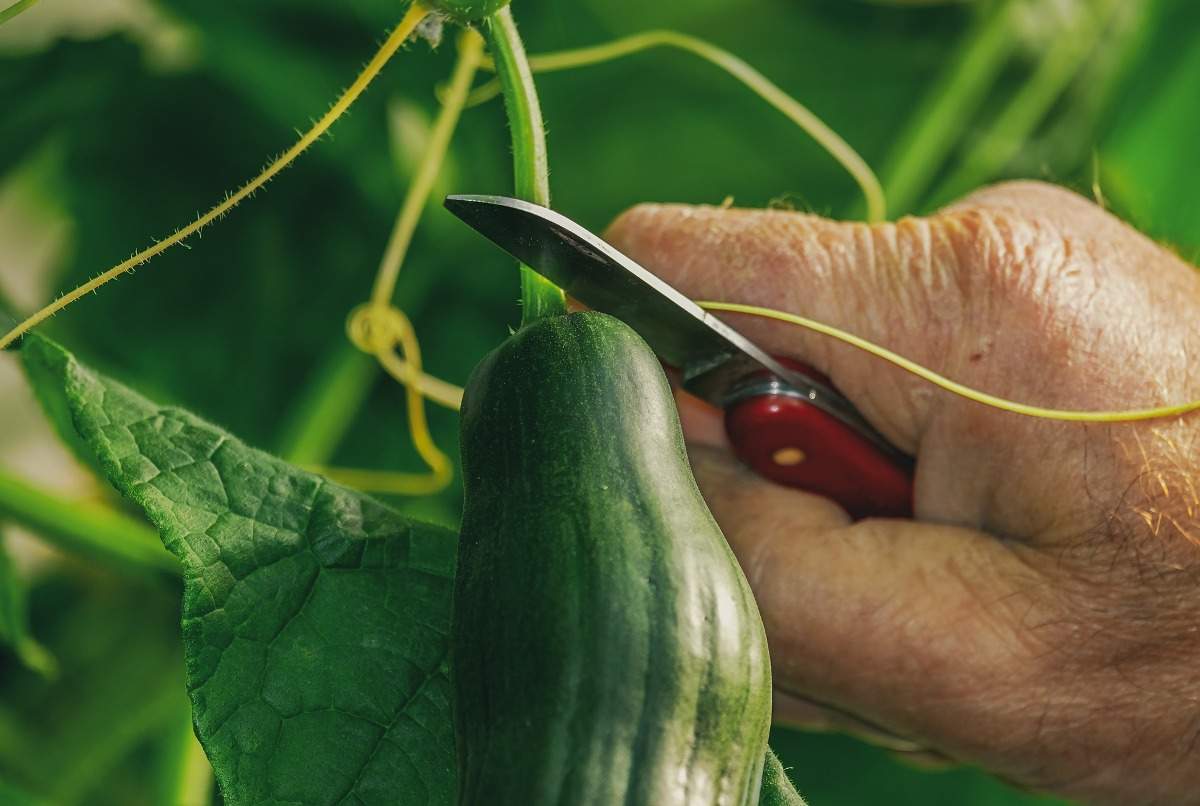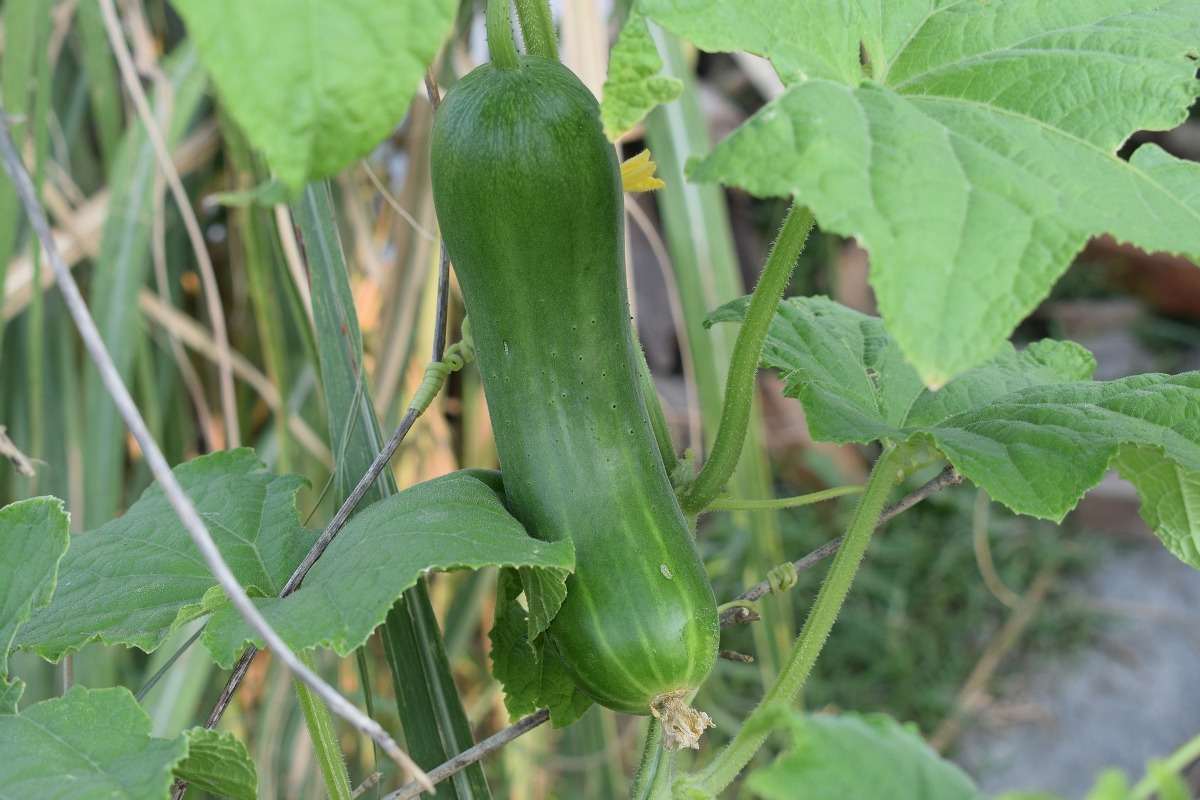Growing Cucumbers in pots
Cucumbers are members of the family Cucurbitaceae. Cucumbers are nutritious and can be prepared and eaten in a different variety of ways. Growing Cucumbers indoors in pots means you can have this crunchy treat available year-round. In this article we also discuss below topics;
- How long do Cucumbers take to grow
- Cucumber plant care
- Growing Cucumbers from seed
- Tips for Growing Cucumbers in pots
- Growing Cucumbers in pots
- Different varieties of Cucumbers
A step by step guide to growing Cucumbers in pots
Cucumbers are an essential summer vegetable and one that is very easy to grow and extremely productive even in containers. You don’t need a big garden to grow Cucumbers plants. Growing Cucumber plants is among the most popular activities in backyard vegetable gardens across the country.
Choosing the right Cucumber variety for growing indoors
Bush Cucumber varieties are;
Pick a Bushel – This Cucumber variety is ideal for pots. The compact plants grow just 2-feet long and can be planted with other vegetables and herbs in a large container or on their own in medium-sized pots. It’s early to produce and the fruits are great for fresh eating or making into pickles. Harvest when the Cucumbers are 3 to 5 inches long.
Salad Bush –Salad Bush has been a standard Cucumber variety for small gardens and pots. The plants grow 2-feet long and yield full-sized slicing Cucumbers. Harvest when they are 8 inches long.
Parisian Gherkin – A semi-vining Cucumber, the plants of Parisian Gherkin grow 2 to 3 feet long and produce dozens of mini Cucumbers that are delicious fresh or pickled. The fruits have small black spines and a crisp, lightly sweet flavor.
Space master – This popular Cucumber starts pumping out 6 to 8 inch long fruits less than two months from seeding. This is a great plant variety for pots as well as hanging baskets as the plants grow only two to three feet long.
Vining Cucumber varieties;
Lemon – Lemon is a popular heirloom variety with an unusual roundish, pale green to light yellow color fruits. The vines can grow 8 feet long and produce dozens of Cucumbers per plant. They’re best harvested when still pale green to light yellow color. Once they turn bright yellow, they’re over mature.
Diva – Diva is reliable and productive and also perfect for pots or garden beds. The vines grow 5 to 6 feet long so provide support. They’re parthenocarpic which means they don’t need to be pollinated to produce a crop. This is useful if you’re growing the plants in pots in a greenhouse or polytunnel. For optimal flavor, harvest when the fruits are 5 to 7 inches long.
Picolino – Picolino is a cocktail-type Cucumber with compact vines that grow just 4 to 5 feet long and boast excellent disease resistance. The fruits are smooth and deep green and best harvested when 4 to 5 inches long.
Suyo Long – This is a traditional variety slender Cucumbers up to 15 inches long. It’s always a popular Cucumber variety in our garden as everyone loves the mild, almost sweet flavor of Suyo Long. Then, the vines grow seven feet or more so provide support.
Best pots/containers for growing Cucumbers
In case if you miss this: Growing Button Mushrooms at Home.

Choosing the right container to grow Cucumbers is the first step to a successful harvest. The container should hold at least 5 to 7 gallons of potting mix and have good drainage. Bigger is better as a larger volume of soil holds more water but is heavier and less prone to tipping over.
Common materials for containers have plastic, fabric, wood, and metal. You can buy pots or up-cycle items like 5-gallon buckets, half-barrels, or wine boxes. If your choose container doesn’t have any drainage holes, be sure to add some to the bottom with a drill. Though, fabric planters are free-draining and don’t need drainage holes. Bush-type Cucumbers can be grown in hanging baskets, but again, opt for a large-sized basket that is at least 12 to 14 inches in diameter.
Use good quality potting soil for Growing Cucumbers in pots
Rich, healthy soil will keep your Cucumber plants well-fed and retains more moisture than poor quality soil. Do not use ordinary garden soil, and which does not drain well when used in a container.
Sunlight and temperature requirement for growing Cucumbers in pots
Your Cucumber container garden will require at least 6 to 8 hours of full sun. Almost everyone overestimates how much sun an area gets, so it pays to figure out how much direct sun an area gets before you plant there. Either use a sun calculator or get out your watch and time how many hours the sun is hitting an area.
Cucumber plants need warm soil to thrive and grow. Then, they grow best from around 21°C to 35°C. That means Cucumbers must be planted in containers after the soil temperatures are at least 21°C. Depending on how protected they are and what material your pot is made of, you may have to wait around 2 weeks after the last frost. Some pots will heat up quickly. Black plastic pots, which use a soil cover, retain heat, so they will reach the desired temps sooner than other materials.
Trellis arrangement for Cucumber
Cucumber is a creeper, and thus you need trellis arrangement for it to grow well. It can even be grown on the ground without a trellis, however that way a lot of space is wasted. Moreover, if you are growing Cucumber on the terrace and not on ground then it is not safe to let them grow on the slab as a concrete slab can get very hot during summers. A trellis for Cucumber plants can simply be built by tying pieces of bamboo together like a mesh. We use fishing nets and also plastic strings in our shade house structure. Cucumber plants tend to grow fast after germination and you should be ready with your trellis by then.
Planting Cucumber seeds
Cucumbers are easy to start from seed in a container. Fill the pots with the moist seed-starting mix; then press 2 seeds 1 inch deep into each pot. Then cover the pots with a plastic cover or plastic wrap. Put the pots in a brightly-lit, warm location and place the pots on a tray on top of a seed-heating mat. When the Cucumber seeds germinate, remove the plastic. Keep moist, but not waterlogged.s
You can also plant the seeds directly in the garden bed when soil temperatures are 18 to 21°C. If it is early in the season and still cool, do not remove the black plastic. Snip holes in the plastic at the base of the trellis or on the mound; then plant the Cucumber seeds 1 inch deep and 6 to 8 inches apart. Water thoroughly.
Keep the soil moist as the seeds germinate, usually in 3 to 10 days. When the plants are about 4 inches tall, snip off the weakest seedlings. Space Cucumber plants growing on trellises at 12 to 18 inches apart or 2 to 3 plants per mound.
Growing Cucumbers vertically
You should not miss this: Growing Capsicum Hydroponically.

One main advantage of Growing Cucumbers Vertically is that you can avoid a common problem of fruit rot. It happens when Cucumber fruits sit in moist soil for a prolonged period. When you allow Cucumber vines to grow up vertically, and it improves the air circulation around the plant that prevents fungal diseases. Plants have a sprawling habit, and growing Cucumbers vertically allow their leaves to absorb more sun, which results in healthy plant and large size Cucumbers. One more key benefit is that you can harvest the Cucumber fruits more easily and on time. If you’re growing Cucumbers in containers vertically, choose large containers that are more than 12 inches deep and wide. How many Cucumber plants you can grow in such a container mainly depends on the variety you are planting. A vining variety grows tall and sends long plant roots, whereas bushier varieties are short.
Watering container Cucumbers
Cucumber plants need a consistent supply of water to produce the highest quality fruits. If Cucumber plants are water-stressed and allowed to wilt in between watering, the fruits can turn bitter. Container grown vegetables need to be watered more than in-ground plants so keep a close eye on moisture levels and water when the soil feels dry to the touch. In summer, this can be every day, depending on the weather and the size of the container.
Grow Cucumbers in a Small Space
- Start Cucumber seeds indoors in peat pots for easy transplant 3 to 4 weeks before temperatures are consistently 15°C at night. Cucumbers are direct-seeded in the garden when the soil temperature is approximately 21°C. In either case, sow seeds about 1/2 to 1 inch deep. Transplants allow you to plant seedlings about 8 to 12 inches apart without losing space to seeds that don’t germinate.
- Apply organic compost and high-nitrogen fertilizer into the top 10 to 12 inches of soil before seeding or transplanting then you can plant closer together. The more plants your garden will support, the more nutrients it wants to make available.
- Plant Cucumbers in full sun next to a trellis or fence sited so it won’t shade other parts of the home garden. Encourage vines onto the support manually when young, then should cling and climb on their own. Then, plant radishes, lettuce, beans, or cabbage at the base of the fence or trellis-trained Cucumbers. Peas can be inter-planted to clamber up the trellis alongside Cucumbers. Allow 6 to 8 inches between plants, alternating Cucumbers, and chosen companion plants.
- Fill 5-gallon buckets that have drilled drainage holes, with potting soil and grow Cucumber cultivars on the patio or even a sunny apartment balcony. Bush Cucumbers produce less fruit than vining varieties. They require frequent water and regular feedings of water-soluble fertilizer. In the garden, they are planted in hills and take about 2 to 3 square feet of space.
- Water the soil around the base of Cucumber plants early in the day and avoid wetting the foliage to help prevent the fungal disease. The Cucumber plants need to be kept consistently moist until fruit is ripe to avoid a bitter flavor.
Pests and diseases affected by Cucumber plants
Cucumbers can fall prey to pests such as Cucumber beetles, aphids, and slugs, and diseases like powdery mildew and bacterial wilt. It also helps to grow resistant varieties, but keeping an eye out for potential problems also allows you to take action before they get out of hand.
You may also check this: Growing Runner Beans in Pots from Seeds.

Cucumbers are best harvested when the fruits are slightly immature. Fruit size varies from variety to variety with some ready to pick when just 2 inches in length and others when they’re a foot long, so read the seed packet for specific harvest information. Don’t allow over-ripe fruits to remain on the plant and this reduces new flower and fruit production.
Cucumbers can grow ridiculously fast and they can go from tiny to enormous in just a few days. Almost all Cucumbers get bitter and seedy as they become overripe, so make sure to check plants often for ripe Cucumbers. Many plant varieties can be picked small, and some are tastiest when they are petite. Check plant tag or seed packet to find out the optimal size for harvest. Use a garden clipper or scissors to harvest Cucumbers. If you pull them off, you risk damaging the vine, which can simply break. Harvest often, because the more you harvest Cucumbers the more you will have. Even if a Cucumber fruit is damaged or too big, take it off.
Commonly asked questions about Growing Cucumbers in pots

How much space does a Cucumber plant need?
Each Cucumber plant in a row needs a space of about 48 to 72 inches by 12 to 18 inches. You can save garden space by growing Cucumbers along a trellis, which reduces the amount of ground space needed for the vines to grow.
Can you grow Cucumbers from a Cucumber?
If the Cucumber plant is a hybrid variety then the fruit will be less likely to produce the same as the original parent. And, if it does manage to grow, then the fruit may not set, or it might end up reverting to a different version of a previous plant. Whereas if you select an open-pollinated Cucumber then the seed will eventually grow into a new plant, but it may take longer than expected for the seed to germinate.
How much time does it take to grow a Cucumber?
When properly cared for and kept free of disease, Cucumbers make long, slender fruit that ranges in length from 3 to 24 inches. It is ready for harvest in 50 to 70 days from planting and depending on how you plan to use them.
Can you overwater a Cucumber plant?
Overwatering is one of the worst things that can happen in a home garden. Although you may think you are helping Cucumbers by watering more often, too much water can damage and quickly kill them by allowing plant roots to sit in damp soil and by removing beneficial oxygen from the soil.
Why are my Cucumbers turning yellow and dying?
When Cucumbers become overripe, their green coloring formed from chlorophyll begins to fade, resulting in a yellowing pigment. The Cucumbers become bitter with size and yellow Cucumbers are generally not fit for consumption. A yellow Cucumber can be the result of a virus, too much water, or a nutrient imbalance.
Why are my Cucumber plants turning brown?
Angular leaf spot is a bacterial disease that causes angular brown spots on plant leaves. Spots can dry out and become brittle, falling away from leaves and causing large irregular holes. Angular leaf spot forms during moist, humid weather and can potentially survive in the soil for 2 years.
Can a wilting Cucumber plant be revived?
Cucumbers wilt and die quickly after the infection begins and there is no treatment for bacterial wilt. Remove and bury infected Cucumber plants as quickly as possible to prevent the disease from spreading to other plants.
Why are my Cucumber plants wilting and dying?
Soil saturated with water will cause a Cucumber plant to wilt because of the lack of oxygen in the soil. If the Cucumber plant wilts only during the day and recovers at night, then the soil can be too dry. Wilting Cucumber plants that do not recover at night may be infected by a disease known as bacterial wilt.
The conclusion of growing Cucumbers in Pots
It is a very easy process to grow cucumbers from seed. The above information may be used to plant cucumbers in the backyard, growing cucumbers on the terrace, growing cucumbers indoors, balconies, etc,. The same information is also useful to grow cucumber vegetables in a Polyhouse or Greenhouse. In case if you are interested in this: Greenhouse Cucumber Production.